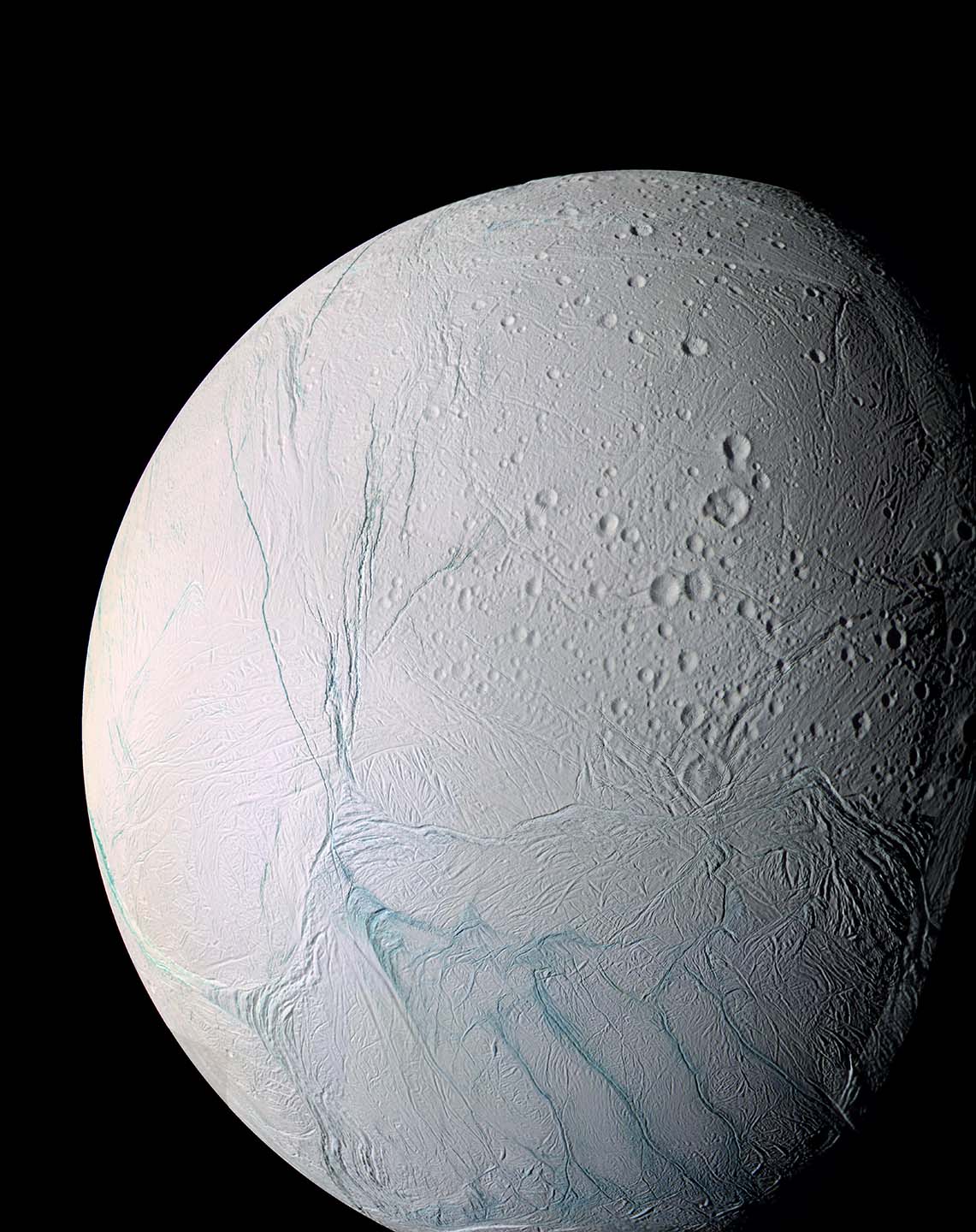Press Release
Chemical Energy ‘Critical for Life’ Found on Saturn’s Moon Enceladus
Thu, 04/13/2017 - 14:31
Scientists have found that a form of chemical energy on which life can feed appears to exist in Saturn’s moon Enceladus — further enhancing the scientific interest of this and other “ocean worlds” in our solar system and beyond.
Writing in the journal Science, researchers from NASA’s Cassini mission team report that hydrogen gas, which could potentially provide a chemical energy source for life, is pouring into the subsurface ocean of Enceladus from hydrothermal vents on the sea floor. The presence of ample hydrogen in the moon’s ocean means that microbes — if any exist there — could use it to obtain energy, by combining the hydrogen with carbon dioxide dissolved in the water. This chemical reaction, known as “methanogenesis” because it produces methane as a byproduct, is at the root of the tree of life on Earth, and could even have been critical to the origin of life on our planet.
“This is the first time that we have found so many of the essential components for life in one place beyond our own planet. And it is one of the least expected places, too: a small moon far from the sun,” said Mark Perry, a space scientist from the Johns Hopkins University Applied Physics Laboratory in Laurel, Maryland, and a co-author of the Science paper. “This remarkable discovery gives us great hope that we will eventually find life somewhere besides Earth.”
Life as we know it requires three primary ingredients: liquid water, a source of energy (for metabolism), and the right chemical ingredients (primarily carbon, hydrogen, nitrogen, oxygen, phosphorus and sulfur). With this finding, Cassini has shown that Enceladus — a small, icy moon a billion miles farther from the sun than Earth — has nearly all of these ingredients for habitability. Cassini has not yet shown that phosphorus and sulfur are present in the ocean, but scientists suspect them to be, since the rocky core of Enceladus is thought to be chemically similar to meteorites that contain the two elements.
“Confirmation that the chemical energy for life exists within the ocean of a small moon of Saturn is an important milestone in our search for habitable worlds beyond Earth,” said Linda Spiker, Cassini project scientist at NASA’s Jet Propulsion Laboratory in Pasadena, California.
The Cassini spacecraft detected the hydrogen in the plume of gas and icy material spraying from Enceladus during its deepest and last dive through the plume on Oct. 28, 2015. Cassini also sampled the plume’s composition during previous flybys, earlier in the mission. From these observations scientists have determined that nearly 98 percent of the gas in the plume is water, about 1 percent is hydrogen with the rest a mixture of other molecules including carbon dioxide, methane and ammonia.
The measurement was made using Cassini’s Ion and Neutral Mass Spectrometer, or INMS, instrument, which sniffs gases to determine their composition. INMS was designed to sample the upper atmosphere of Saturn’s moon Titan. After Cassini’s surprising discovery of a towering plume of icy spray in 2005, scientists turned its detectors toward the small moon.
Cassini wasn’t designed to detect signs of life in the Enceladus plume — in fact, scientists didn’t know the plume existed until after the spacecraft arrived at Saturn. “Although we can’t detect life, we’ve found that there’s a food source there for it. It would be like a candy store for microbes,” said Hunter Waite, lead author of the study from Southwest Research Institute, San Antonio, Texas.
The new findings are an independent line of evidence that hydrothermal activity is taking place in the Enceladus ocean. Previous results published in March 2015 suggested hot water is interacting with rock beneath the sea; the new findings support that conclusion and add that the rock appears to be reacting chemically to produce the hydrogen.
For more information, visit https://www.nasa.gov/specials/ocean-worlds/.
